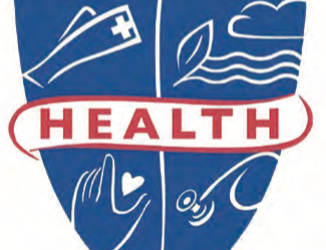by Kate Evans
The use of e-cigarettes or vapes by high school students has grown substantially in the past five years as have health officials’ concerns about teen vaping.
E-cigarettes or vapes usually contain nicotine from tobacco, along with flavorings and other additives. They can also deliver cannabis or other drugs.
Nicotine is highly addictive, whether found in e-cigarettes or regular cigarettes. According to the Centers for Disease Control and Prevention (CDC) and the Surgeon General, the use of e-cigarettes is unsafe for youth, young adults and pregnant women and their developing babies, as is smoking tobacco.
Vaping is a delivery system for the nicotine. The vape e-liquid, which contains nicotine, flavoring, additives and sometimes cannabis or other drugs, is heated into an aerosol that’s inhaled.
Most vapes and e-cigarette devices have a battery, a heating element and a place to hold liquid. Newer vapes can be USB-shaped. Some vapes are disposable. Others are rechargeable and refillable. They often do not look like smoking devices.
The brain is still developing until around age 25 and nicotine can harm adolescent and young adult brain development.
CDC officials say that nicotine exposure during adolescence and young adulthood can cause addiction and harm the developing brain when it’s more vulnerable to addiction.
Vape users also risk exposing their respiratory system to harmful chemicals in e-cigarettes that can damage their health. Bystanders can also breathe in this aerosol when the user exhales into the air.
CDC officials and the Surgeon General urge parents to talk with their kids to make it clear that adults don’t approve of them smoking cigarettes or vaping and that it’s best to live tobacco-free.
A CDC parent tip sheet contains ways to talk with a young person about e-cigarette/vape use.
The parent tip sheet notes that using nicotine at a young age may make it harder for teens to concentrate, learn, or control their impulses. It can affect mood and focus. Nicotine can even train the brain to be more easily addicted to other drugs like meth and cocaine. Using it can also change the brain to make the user want more nicotine.
Breathing the cloud that others exhale when they are vaping can expose people to nicotine and other chemicals that can be dangerous to breathe.
Some defective e-cigarette batteries have exploded, caused fires and seriously injured people. Most explosions happened when the e-cigarette batteries were being charged.
Nicotine addiction
Parents can talk to their children about their battles to quit smoking tobacco and what prompted them to quit.
Some parents learned that people who smoke are more likely to develop and die from certain diseases than people that don’t smoke. Smoking can cause heart disease, lung disease and cancer throughout the body.
Parents may share that quitting smoking was hard for them and that they didn’t like being addicted to nicotine. Many people have successfully quit smoking. The best thing is to never start smoking at all.
Some adults are using e-cigarettes as a stop smoking aid, but the Food and Drug Administration hasn’t approved them for this use. However, many continue smoking regular cigarettes while using e-cigarettes, which is detrimental to one’s health.
Harmful ingredients
The CDC and the American Lung Association note that besides nicotine, e-cigarettes have been found to contain a number of harmful/potentially harmful ingredients.
These harmful ingredients include ultra-fine particles that can be inhaled deep into the lungs and can harm the lungs, along with flavorants like diacetyl that’s been linked to serious lung disease, volatile organic compounds like benzene, which is found in car exhaust, and heavy metals such as tin, nickel and lead.
Additional toxic chemicals and metals found in vapes are cancer-causing chemicals including acetaldehyde and formaldehyde, cadmium– a toxic metal that causes breathing problems and disease, propylene glycol which is used to make antifreeze and paint solvent, diethylene glycol – a toxic chemical used in antifreeze that’s linked to lung disease, and acrolein – an herbicide weed-killer that can cause irreversible lung damage.
Lung injury
More than 2,500 hospitalized cases of e-cigarette/vaping product-associated lung injury (EVALI) occurred nationwide in 2019 with 55 deaths in 27 states including Virginia, Pennsylvania and also the District of Columbia.
Hospitalizations from e-cigarette/vaping product-associated lung injury (EV ALI) were reported then in all 50 states, the District of Columbia, Puerto Rico and the U.S. Virgin Islands. Cases are no longer being tracked by the CDC, but concerns regarding EVALI still remain.
A link was found between EV ALI and Vitamin E acetate that had been added to THC oil in e-cigarettes or vaping cartridges as a cutting agent. It was considered to be the primary cause of the EV ALI cases. 80% of EV ALI patients reported using THC-containing products. However, there may be more than one cause of the lung illness.
Centers for Disease Control and Prevention and the Food and Drug Administration recommended that people not use THC-containing e-cigarette or vaping products and to not use THC oil. Officials stressed that people shouldn’t add Vitamin E acetate, or any other substances not intended by the manufacturer to vaping products.
The best way for people to ensure that they are not at risk is to refrain from using all e-cigarette or vaping products.
Symptoms
Symptoms of the e-cigarette/vaping associated lung injury include cough, shortness of breath or chest pain, nausea, vomiting and diarrhea along with fever, fatigue and weight loss, said CDC officials. Many patients were hospitalized and required supplemental oxygen or being placed on ventilators.
Anyone who develops EV ALI symptoms should seek medical care immediately.
How to quit
There are several ways for people to quit smoking, whether vaping or regular cigarettes. They include individual or group counseling, a free telephone quitline: 1-800-QUIT-NOW, nicotine-cessation therapy: over-the-counter-patch, gum and lozenges and prescription-inhaler and nasal spray, prescription medications (Varenicline and Bupropion), free online resources, free text programs and mobile apps.
For more information about vaping and e-cigarettes, check out the Surgeon General’s and the Centers for Disease Control and Prevention’s websites.



